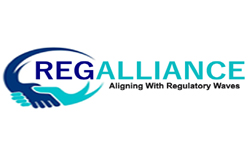EPR Authorization for E-waste in India
“EPR stands for Extended Producer Responsibility, which entails responsibilities for producers, importers, manufacturers, and brand owners to collect and recycle e-waste.”
Overview on EPR Authorization for E-waste
EPR stands for Extended Producers Responsibility, is a policy of the government under which producers are given the vital responsibility for the treatment and disposal of the consumer goods. The EPR authorization is mandated for the producers, importers, manufacturers, and brand owners. EPR is a practice that encompasses a combination of environmental, economic, and social factors. EPR is a policy strategy in which producers are held financially and physically responsible for the handling and disposal of post-consumer items. Assigning such responsibility might, in theory, create incentives to reduce waste at the source, promote environmentally friendly product design, and support public recycling and waste management aims. The OECD is moving toward expanding EPR to include additional products, product groups, and waste streams such as electrical appliances and electronics products.
Policies concerned with Extended Producer Responsibility
In India, EPR came into existence to deal with E-waste. Therefore, the central government decided to introduce the E-waste management act 2016. The EPR focuses on:
- As per the environmental guidelines, the producers, importers, manufacturers, and brand owners are responsible for reducing the pollution created through E-waste.
- It is envisaged under rule 13 (1) rules 2016, Central pollution control board mandated to grant, renew or refuse Extended producers responsibility (EPR).
- Central pollution control board (CPCB) Directed on the enforcement of EPR, which contains specific directions for the manufacturers for channelizing, recycling, storage, dismantling, and refurbishment.
Who can apply for the EPR license?
So, the Producer, Importer, brand owners, and manufacturer can apply for the EPR license in India. EPR certification is mandatory for all manufacturers and importers of E-waste in India. The E-waste certification is required for the Indian and foreign manufacturers or the importers of electoral and electronic equipment under the EPR authorization.
- Producer
- Importers
- Brandowners
- Manufactureres
Authorization for EPR in E-Waste Management
Considering the growing volume of e-waste in India, the government decided to look at their policy options. It determined that putting the responsibility for the post-consumer phase of specific items on the makers could be a viable alternative. Producers are assigned significant financial and physical responsibility for the handling or disposal of post-consumer items under the Extended Producer Responsibility (EPR) policy approach. Assigning such responsibility might be creating incentives to reduce waste at the source, promote environmentally friendly product design, and support public recycling and waste management goals. The OECD is expanding EPR to include additional products, product groups, and waste streams such as electrical appliances and electronics.
Documents required for EPR authorization for E-waste
- KYC of company signatory
- KYC of Authorized signatory
- IEC Code
- Web site domain
- Toll-free No.
What is the procedure of Grant/renewal and refusal of EPR Authorization?
The producers, Importers, Manufacturers, and Brand owners should have to submit file before CPCB.
Application verification
Within 25 days after receiving an application, the Central Pollution Control Board (CPCB) or a state pollution control board may verify and investigate the provided information.
Responsibility for Authorization for Extended Procedures (EPR)
After checking the submitted Documents and being satisfied with the extended producers’ responsibility plan, the Central Pollution Control Board or the State Pollution Control Board for EPR authorization for E-waste.
Validity of EPR (Extended Producers Responsibility)
The extended Producers Responsibility authorization shall be valid for five years.
What are the roles and responsibilities of EPR in relation to E-waste?
- Producers shall be responsible for collecting and channeling the waste from items with the same electrical and electronic equipment code.
- Producers create a framework for channelizing e-waste gathered from distributors and authorized service centers and waste collected from end of life items.
- A pre-treatment is required for hazardous compounds such as mercury and lead, and the producer is liable for disposal in treatment, storage, and disposal facility.
- Producers must be concerned with collecting E-waste like electrical and electronic equipment from previously placed on the market through a dealer, a collection center, a Producers’ Responsibility Organization, buy-back arrangements, an exchange scheme, or a deposit-refund system in the Extended Producers Responsibility plan.
- Producers must organize an awareness program and create awareness through media, advertisement, publication, poster, or other means of communication and product user paper works accompanying the equipment.
- Producers must provide contact details such as an address, email id, toll-free telephone number, or helpline number to consumers or bulk consumers through their website.
What are the benefits of EPR authorization in E-waste licensing
Extended producer responsibility is often discussed as a technique for countering the planned obsolescence since it financially encourages manufacturers to design for recycling and make items last longer. In addition to combatting planned obsolescence, governments may be relieved of the financial strain of paying for and handling trash by moving some of the cost burdens to the manufacturer. One of the advantages of EPR is that it grows more effective since compulsion is applied to countries that export E-waste. E-waste regulation forces infrastructure to either deal with the garbage or adapt new ways for manufacturers to make goods. As more countries adopt these policies, it becomes increasingly more complicated for others to overlook the challenges. Garbage was built up at ports after China banned importing E-waste from the United States; for example- the lack of infrastructure around recycling E-waste in the United States has been possible due to the ability to export and the neglect of producers. The burden from this growing e-waste dump is forcing countries to create their infrastructure and compelling local and federal governments to impose more controls on businesses.
